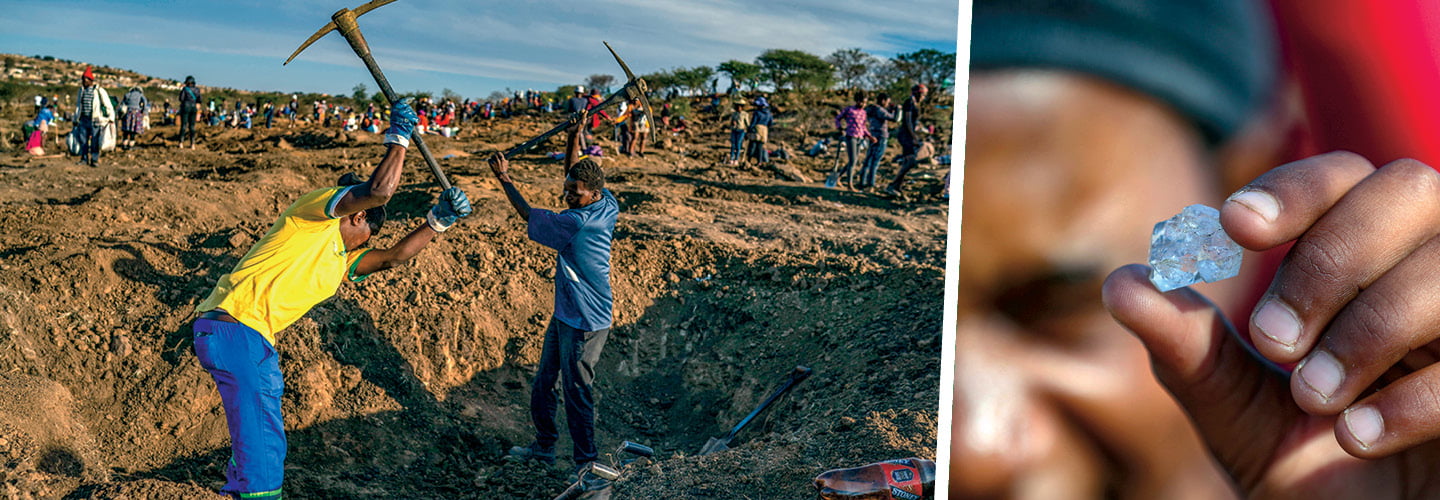The man stretched a pickax high above his head and hacked into the clumpy black dirt around his feet. He took a few more vigorous whacks into the edges of the shallow crater he had dug at the bottom of a hillside, before scooping up a handful of loose soil and shaking it in search of the sparkle of a gem.
Sbusiso Molefe thought maybe he could strike it rich.
The rumor in June that a herdsman had found clear stones resembling diamonds lured thousands of South Africans like Molefe to KwaHlathi, a sleepy village in an eastern province of South Africa where cattle roam freely.
Coming by taxi and by car, many from hours away, they dreamed of a turn of luck in a nation whose persistent struggles with joblessness have reached new heights amid the pandemic. No one who came seemed the least deterred by the widespread skepticism that the stones were really diamonds.
Two days of digging had yielded four stones for Molefe, a 41-year-old Black South African, who conceded that he had no clue whether they were actually diamonds.
“I’m feeling desperate,” he says. “We are just hoping. If they are real diamonds, it means we are winning.”
The diamond rush has completely transformed KwaHlathi, where the village chief estimates that about 4,000 families reside. Cattle once grazed on the digging field, which sits on land owned by the chief and was until recently covered with sweet thorn trees and grass. Now it looks like a bare cratered moon—a treacherous terrain of holes, many of them the size of graves.
The man stretched a pickax high above his head and hacked into the clumpy black dirt around his feet. He took a few more forceful whacks into the edges of the shallow crater he had dug at the bottom of a hillside. Then he scooped up a handful of loose soil and shook it in search of the sparkle of a gem.
Sbusiso Molefe thought maybe he could strike it rich.
In June, a rumor spread that a herdsman had found clear stones that looked like diamonds. It lured thousands of South Africans like Molefe to KwaHlathi, a sleepy village in an eastern province of South Africa where cattle roam freely.
They arrived by taxi and by car, with many of them coming from hours away. They dreamed of a turn of luck in a nation that has continued to struggle with joblessness. The lack of jobs has reached new heights amid the pandemic. No one who came seemed to care about the widespread doubt that the stones were really diamonds.
Two days of digging had led to Molefe, a 41-year-old Black South African, finding four stones. But he admitted that he had no clue whether they were actually diamonds.
“I’m feeling desperate,” he says. “We are just hoping. If they are real diamonds, it means we are winning.”
The diamond rush has completely transformed KwaHlathi, where the village chief estimates that about 4,000 families live. Cattle once fed on the digging field, which sits on land owned by the chief. Until recently, sweet thorn trees and grass covered the patch of land. Now it looks like a bare cratered moon. Many of the holes across the terrain are the size of graves.

